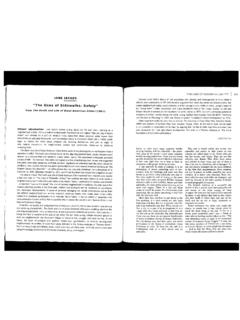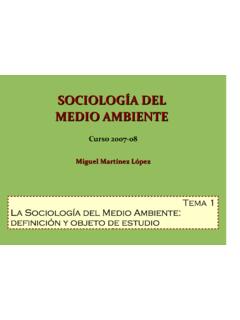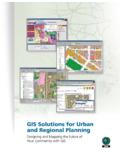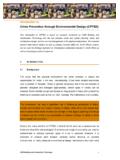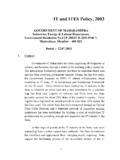Transcription of Image of the City - Miguel Martínez
1 Architecture. Planning THE Image OF THE city Kevin Lynch What does the city 's form actually mean to the people who live there? What can the city planner do to make the city 's Image more vivid and memorable to the city dweller? To answer these questions, Mr. Lynch, supported by studies of Los Angeles, Boston, and Jersey city , formu-lates a new criterion imageability and shows its potential value as a guide for the building and rebuilding of cities. The wide scope of this study leads to an original and vital method for the evaluation of city form.
2 The architect, the planner, and certainly the city dweller will all want to read this book. What the reviewers have said: ".. Kevin Lynch has come up with a readable, tautly organized, authoritative volume that may prove as important to city building as Camillo Sitte's The Art of Building Cities." Architectural Forum " city planners and urban designers everywhere will be taking account of his work for years to come .. The importance of this book in the literature of urbanism is obvious.. we have lacked a theory of the city 's visual perception based on objective criteria.
3 Forsome strange reason, in the period dating from the late 19th Century in Germany and lasting until Lynch's efforts .. there was no experimentation in the matter of how cities are perceived. All of us can be grateful for the resumption of this line of thought. The impact of this volume should be enormous." Leonard K. Eaton, Progressive Architecture "This small and readable book makes one of the most important modern contributions to large-scale design theory .. To understand Lynch's audacity, one must go back to , the year when he l>egan his studies in perception with a travel period in Italy.
4 This was several years before all the 'urban design' conferences, before the coining of the phrase, and at a time when respectable planners were concerned with anything but the exploration of urban form. It took a rebellious young teacher .. fired by the inspiration of F. L. Wright (his sometime mentor), to turn the tables on thirty years of planners' neglect." David A. Crane, Journal of the American Institute of Planners Kevin Lynch The Image of the city The Press Massachusetts Institute of Technology Cambridge, Massachusetts, and London, England PUBLICATION OF THE JOINT CENTER FOR URBAN STUDIES This book is one of a series published under the auspices of the Joint Center for Urban Studies, a cooperative venture of the Massachusetts Institute of Technology and Harvard University.
5 The Joint Center was founded in 1959 to or-ganize and encourage research on urban and regional prob-lems. Participants have included scholars from the fields of anthropology, architecture, business, city planning, econom-ics, education, engineering, history, law, philosophy, political science, and sociology. The findings and conclusions of this book are, as with all Joint Center publications, solely the responsibility of the author. Copyright 1960 by the Massachusetts Institute of Technology and the President and Fellows of Harvard College Twentieth Printime.
6 1990 ISBN 0 262 12004 6 (hardcover) ISBN 0 262 62001 4 (paperback) Library of Congress Catalog Card No: 60-7362 Printed in the United States of America PREFACE This book is about the look of cities, and whether this look is of any importance, and whether it can be changed. The urban landscape, among its many roles, is also something to be seen, to be remembered, and to delight in. Giving visual form to the city is a special kind of design problem, and a rather new one at that. In the course of examining this new problem, the book looks at three American cities: Boston, Jersey city , and Los Angeles.
7 It suggests a method whereby we might begin to deal with visual form at the urban scale, and offers some first principles of city design. The work that lies behind this study was done under the direction of Professor Gyorgy Kepes and myself at the Center for Urban and Regional Studies of the Massachusetts Institute of Technology. It was generously supported over several years by funds from the Rockefeller Foundation. The book itself is being published as one of a series of volumes of the Joint Center for Urban Studies of the Massachusetts Institute of Technology and Harvard University, an agency which has grown out of the urban research activities of these two institutions.
8 As in any intellectual work, the content derives from many sources, difficult to trace. Several research associates contributed directly to the development of this study: David Crane, Bernard v Frieden, William Alonso, Frank Hotchkiss, Richard Dober, Mary Ellen Peters (now Mrs. Alonso). I am very grateful to them all. One name should be on the title page with my own, if only he would thereby not be made responsible for the shortcomings of the book. That name is Gyorgy Kepes. The detailed develop-ment and concrete studies are my own, but the underlying con-cepts were generated in many exchanges with Professor Kepes.
9 I would be at a loss to disentangle my ideas from his. For me these have been good years of association. KEVIN LYNCH December, 1959 vi CONTENTS I The Image of the Environment 1 Legibility, 2; Building the Image , 6; Structure and Identity, 8; Imageability, 9. II Three Cities 14 Boston, 16; Jersey city , 25; Los Angeles, 32; Common Themes, 43. III The city Image and Its Elements 46 Paths, 49; Edges, 62; Districts, 66; Nodes, 72; Land-marks, 78; Element Interrelations, 83; The Shifting Image , 85; Image Quality, 87.
10 IV city Form 91 Designing the Paths, 95; Design of Other Elements, 99; Form Qualities, 105; The Sense of the Whole, 108; Metropolitan Form, 112; The Process of Design, 115. V A New Scale 118 Appendices A Some References to Orientation 123 Types of Reference Systems, 128; Formation of the Image , 131 ; The Role of Form, 133; Disadvantages of Imageability, 138.


